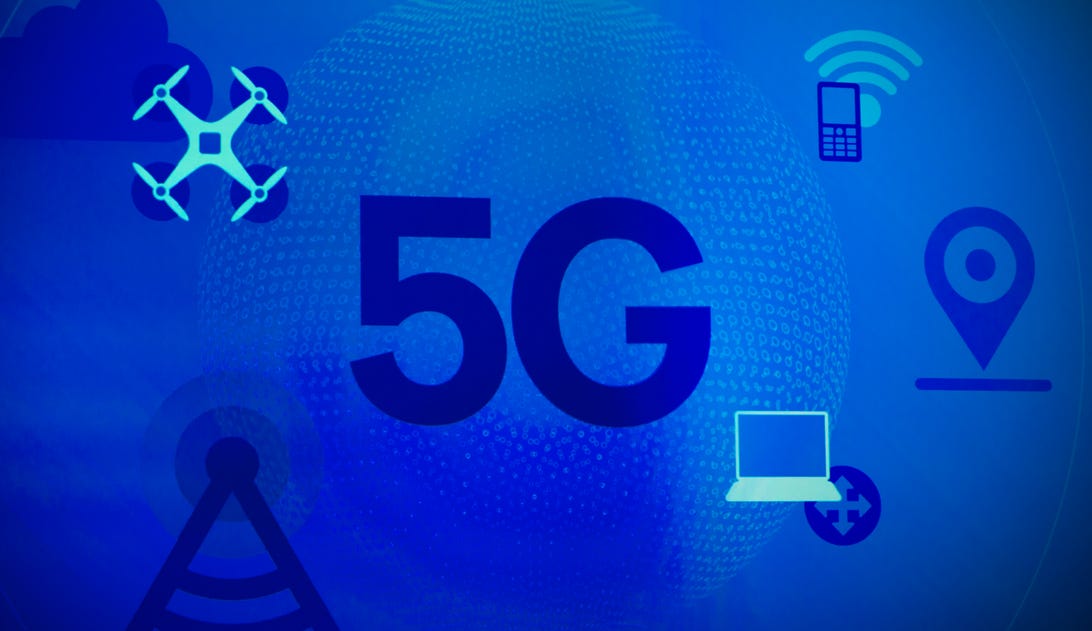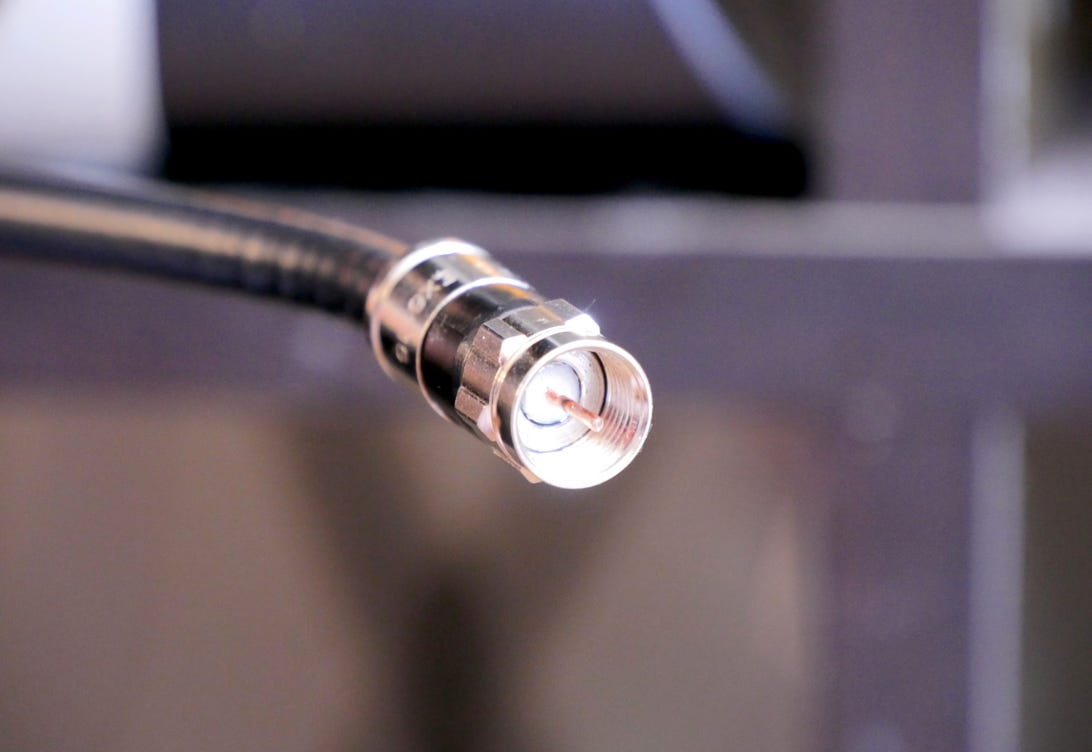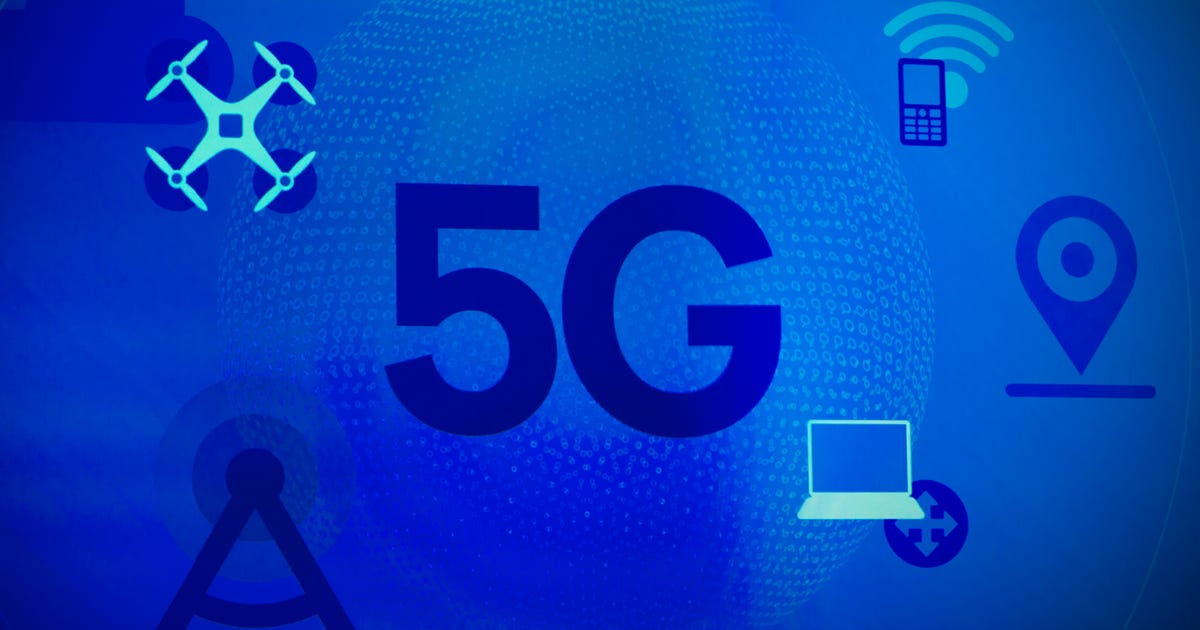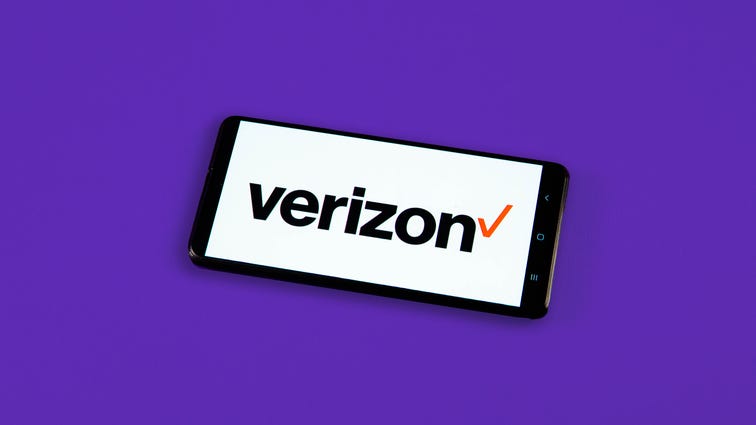[ad_1]

James Martin/CNET
It is no secret that many people are bored with being tied to web service suppliers with cumbersome contracts, low speeds, restrictive phrases and rising charges. All too usually, although, we’ve got few choices and fewer options.
Might 5G be the reply? The expertise powering the latest telephones additionally needs to sort out our dwelling broadband wants. The earliest 5G dwelling web plans, obtainable from names like Starry, T-Cell and Verizon, provide respectable speeds at a simple worth — however availability is restricted to pick cities and areas. Let’s dig in and see the way it works, how briskly it will get, what it prices and the place it is obtainable.
What’s 5G dwelling web?
Merely put, 5G stands for fifth era. Fifth era of what, you ask? The fifth era of wi-fi knowledge networks. You are most likely most aware of listening to 5G used to explain higher cell communications and speedier telephones. You are not incorrect: 5G networks, which use totally different radio frequencies than earlier generations, goal to supply sooner knowledge speeds with a lot much less lag or delay than we had with 4G.
My CNET colleague Eli Blumenthal breaks down the fundamentals of 5G right here. Millimeter-wave expertise makes use of a lot larger frequencies than earlier generations and subsequently offers a lot sooner speeds and connections. However these larger, gigabit speeds include a worth — the information does not journey the identical distance as 4G and has extra hassle with obstructions. To fight that, midband expertise, which affords speeds averaging between 300 and 400 megabits per second, will increase the protection space supplied by millimeter-wave. Lastly, low-band 5G affords a variety just like 4G, however with a pace that tops out between 100 and 200Mbps.
Is 5GHz the identical factor as 5G dwelling web?
Nope. One widespread mistake is to see the “5GHz” setting in your Wi-Fi router and assume you’ve gotten entry to 5G. Wi-Fi routers additionally use short-range radio frequencies — sometimes both 2.4GHz or 5GHz — to transmit your web sign to related units inside your own home. So 5GHz is likely one of the band choices on your dwelling’s Wi-Fi system, nevertheless it’s not the identical as 5G, a mobile expertise that makes use of higher-frequency waves.

Cable, fiber and DSL dwelling web plans require wires that join your own home to the supplier’s grid. With a set wi-fi service like 5G, your own home connects to the supplier’s community over the air.
Taylor Martin/CNET
How is 5G dwelling web totally different from fiber or cable web?
Most ISPs ship dwelling web service by way of telephone traces or cables that join your own home to a extra intensive community. That features widespread web connection varieties, like digital subscriber line, coaxial cable and fiber-optic web. These are all wired connections out of your supplier to your own home.
5G dwelling web, alternatively, is a kind of fastened wi-fi web service, which signifies that the connection between your supplier and your own home is just not a wired one. With 5G, your supplier might want to set up an indoor or outside 5G receiver at your own home to choose up the sign. It is just like satellite tv for pc web, however as an alternative of beaming in a sign from satellites orbiting within the night time sky, it is relaying data from a a lot nearer wi-fi hub. Regardless that you are utilizing the identical 5G community as your cell phone, the gateway is restricted to your location and can’t be used elsewhere.
Which ISPs can present 5G dwelling web?
As acknowledged already, 5G remains to be being deployed throughout the nation. Because of that, the variety of suppliers at present providing any 5G dwelling web plan is comparatively restricted. For instance, AT&T offers a 5G cell service, however its fastened wi-fi resolution doesn’t at present make the most of its 5G community. So, proper now, your primary choices for 5G dwelling web are Starry, T-Cell and Verizon. Let’s discover what every affords.
Sarah Tew/CNET
Starry is a comparatively new participant on the ISP area. The corporate, which began in 2016, doesn’t lean into the 5G connection: It doesn’t use 5G NR radio expertise, which is a spotlight of cell suppliers, nevertheless it does use millimeter-wave expertise as a important facet of delivering fastened wi-fi dwelling web to clients. “We function in 24GHz and 37GHz spectrum bands and our community expertise is similar throughout all our markets,” a Starry spokesperson mentioned.
The month-to-month worth contains limitless knowledge, free gear and set up, and no contracts. It is also the one 5G dwelling web supplier listed right here that options symmetrical or near-symmetrical obtain and add speeds, just like what you’d discover with a fiber web service.
Lastly, Starry additionally affords a “30-Day Glad Interneting Assure” that contains a full refund in the event you aren’t happy with the service and cancel throughout the first 30 days.
Starry Web plans and pricing
| Plan | Max speeds | Month-to-month charge | Gear payment | Information cap | Contract |
|---|---|---|---|---|---|
| Starry Primary | 50Mbps obtain, 50Mbps add | $30 | None | None | None |
| Starry Plus | 200Mbps obtain, 100Mbps add | $50 | None | None | None |
| Starry Professional | 500Mbps obtain, 250Mbps add | $65 | None | None | None |
| Starry Gigabit | 1,000Mbps obtain, 500Mbps add | $80 | None | None | None |
T Cell
T-Cell Residence Web options the bottom broadband speeds amongst our listed suppliers. That is as a result of it wavers between 4G LTE and 5G. It isn’t completely 5G. T-Cell “anticipates” that almost all clients will common between 33 and 182Mbps obtain speeds. CNET examined T-Cell’s dwelling web service and we hit a max of 132Mbps on the service.
T-Cell’s dwelling web service contains all setup charges and taxes. There is no such thing as a annual contract or knowledge cap. Its present deal options Paramount Plus free for one 12 months ($5 a month model with restricted advertisements) and, for eligible Magenta MAX clients, half off the worth of YouTube TV for the primary 12 months.
Learn our T-Cell Residence Web overview.
T-Cell Residence Web plans and pricing
| Plan | Max speeds | Month-to-month worth | Gear payment | Information cap | Contract |
|---|---|---|---|---|---|
| T-Cell Residence Web | 33-182Mbps obtain, 6-23Mbps add | $50 ($30 for eligible Magenta MAX cell clients) | None | None | None |
Sarah Tew/CNET
Verizon’s 5G web service, which makes use of ultrawideband 5G expertise, boasts max obtain speeds of as much as 1 gigabit and common speeds of round 300Mbps. Nevertheless, add speeds usually are not symmetrical and can plateau at 50Mbps or much less as a result of Verizon doesn’t completely use the millimeter-wave expertise however a mixture of low-band, midband and millimeter-wave.
Verizon 5G Residence Web pricing is $50 a month for a two-year worth assure or $70 a month to lock within the worth for 3 years, plus some additional perks. Both method, it is an all-in worth that features gear, setup charges and taxes, and like all different Verizon plans, it requires no contracts or knowledge caps.
Verizon additionally affords many promos and offers to sweeten the pot for potential clients. First, it offers an early termination payment credit score provide to present qualifying clients a invoice credit score of as much as $500 in the event that they change from their present ISP and are charged an ETF. Second, 5G Residence Plus clients get a free 12 months of the Disney Bundle (Disney Plus, ESPN Plus and Hulu) whereas 5G Residence cuts that to 6 months. Lastly, clients with qualifying Verizon Limitless cell plans will get 50% off the month-to-month price of both plan.
Learn our Verizon 5G Residence Web overview.
Verizon 5G Residence Web plans and costs
| Plan | Max speeds | Month-to-month worth | Gear payment | Information cap | Contract | Value assure |
|---|---|---|---|---|---|---|
| Verizon 5G Residence | 300-940Mbps obtain, 50Mbps add | $50 ($25 for qualifying Verizon Limitless cell clients) | None | None | None | 2 years |
| Verizon 5G Residence Plus | 300-940Mbps obtain, 50Mbps add | $70 ($35 for qualifying Verizon Limitless cell clients) | None | None | None | 3 years |
Where is 5G home internet service available?
Let’s not sugarcoat this: 5G home internet service is not yet widely available. While the list of cities seems to be expanding nearly every month, most are larger US cities.
T-Mobile Home Internet is the most widely available service among the three providers we’ve highlighted. While Verizon said earlier this year that its 5G home internet service is now available to 30 million homes, T-Mobile has leapfrogged that by expanding the service availability of its fixed wireless service to 40 million households. Yet T-Mobile acknowledges it does not have unlimited availability across those locations due to network capacity and a limited inventory of its router. To see the expansive list of metro areas, you can check out this T-Mobile Home Internet PDF.
Verizon’s 5G Home Internet is currently offered in approximately 900 markets. That means that although the total number of households in which it is available is less than T-Mobile, it does cover more cities.
Starry Internet is available in Boston; Columbus, Ohio; Denver; Los Angeles; New York City and Washington, DC. Its 2022 expansion roadmap includes approximately 30 million households in Atlanta, Chicago, Dallas, Detroit, Houston, Indianapolis, Memphis, Miami, Philadelphia, Phoenix, Portland, San Francisco and Seattle.
Does 5G home internet make sense for you?
The first thing to be said is what we always say regarding ISPs. No matter how good the service, it’s all moot if it’s not available at your address. 5G technology itself is still being rolled out across the country, so we should expect to see some bumps in the road as that effort continues.
Still, 5G home internet availability is increasing at a pretty rapid pace. The affordable, straightforward pricing is even more appealing — and what jumps off the page for me. Time will tell if that trend holds as availability continues to expand. Still, it would be a real step forward if 5G could emerge as a viable broadband option for traditionally underserved parts of rural America. As CNET alum Rick Broida put it after testing T-Mobile’s service, “imperfection is a lot more tolerable when you’re paying less than half what you were before.”
5G home internet FAQs
What does the ‘G’ stand for in 5G?
It simply means generation. In other words, 5G is the fifth generation of cellular technology.
What’s the difference between 5G home internet and cable internet?
Cable internet — whether coaxial cable, fiber-optic cable or a hybrid of the two — relies on wires to transmit data from a central hub into your home. But 5G home internet is a fixed wireless solution that uses an internet gateway to connect your home using radio frequencies to connect to a cell tower or data hub nearby.
How much does 5G home internet cost?
5G home internet is one of the more affordable options available considering the decent download speeds that current plans average — T-Mobile averages just over 100Mbps, Starry chimes in at 200Mbps and Verizon’s median speed is 300Mbps. The lowest monthly cost among the three main providers is $25 (Verizon 5G Home with the Verizon Unlimited discount) and the highest is $70 (Verizon 5G Home Plus without the Verizon Unlimited discount). But each of the providers’ monthly costs includes all fees, taxes, equipment fees and installation charges. So the monthly charge you see is the monthly charge you pay. Lastly, none require term contracts, so you won’t have to fear any early termination fees.
How fast is 5G home internet?
In theory, 5G should enable a speedy connection that will match or better what you get with cable or fiber internet. But when it comes to the reality of 5G home internet, that’s simply not the case. To increase the reliability and coverage of the 5G internet service, most providers rely on a mix of millimeter-wave, low-band and midband technology — as well as 4G LTE in some cases — and this means home internet customers won’t see the real high-end capabilities of 5G at present.
[ad_2]
Source_link





